Idea by
Sharanya Reddy
Call for ideas 2020
Limbo to Liberation
Limbo to Liberation
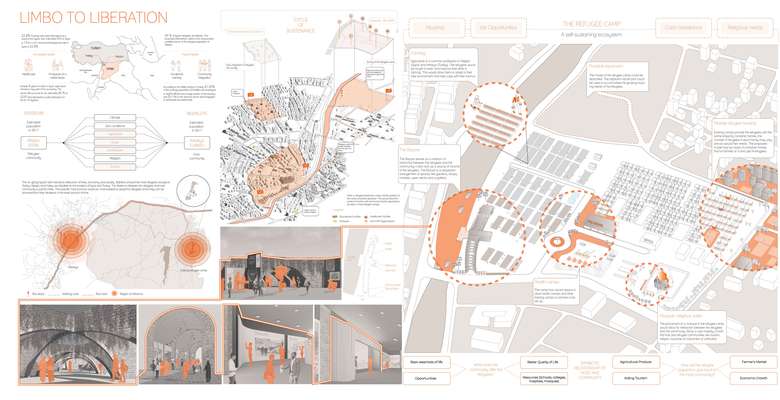
- Site-specific cases
LIMBO TO LIBERATION
The ongoing war in Syria has continually caused havoc in the lives of Syrians; over the past decade, thousands of Syrians have lost their lives, families, homes and any hope for a better future. Due to the large number of Syrians seeking refuge, they are not immediately welcomed into the neighboring countries. Instead they are taken to refugee camps where they would have to wait for authorization of their refugee status. Escaping a war struck country is a traumatic experience in itself but the deteriorating conditions of the existing refugee camps cause more harm than benefit to the refugees. The refugees remain in this state of “limbo” for prolonged periods of time, they are rescued from one rescued from one hostile environment and put into another. The design intervention proposes a system for the uneducated or unskilled population, that would through the refugee camp promote growth and stability of the refugees
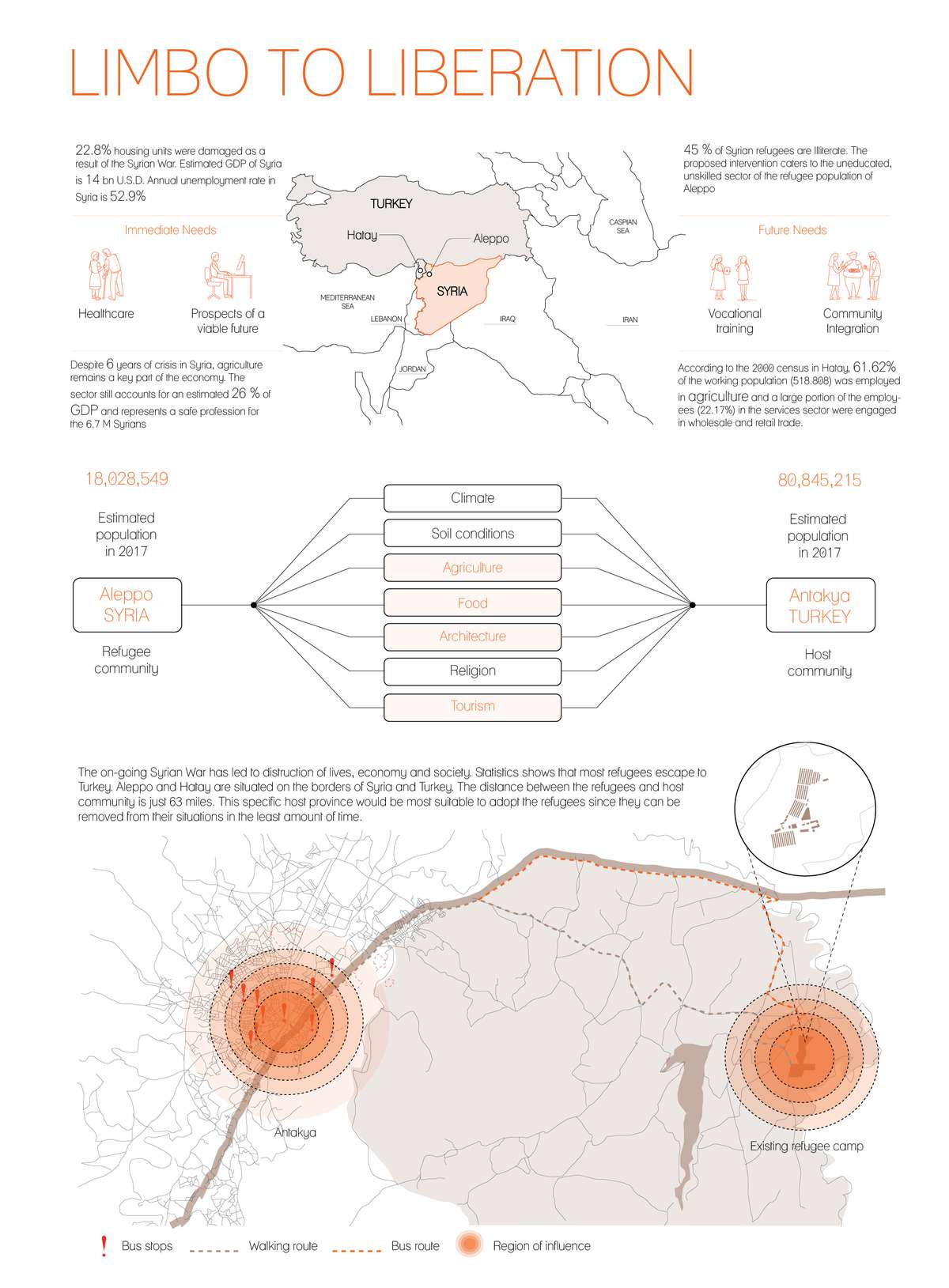
Current scenario of refugees in Syria, analysis of the refugee (Aleppo, Syria) and host community (Antakya, Turkey) and the conditions of refugee camps in Turkey.

A macro level understanding of the city of Antakya.
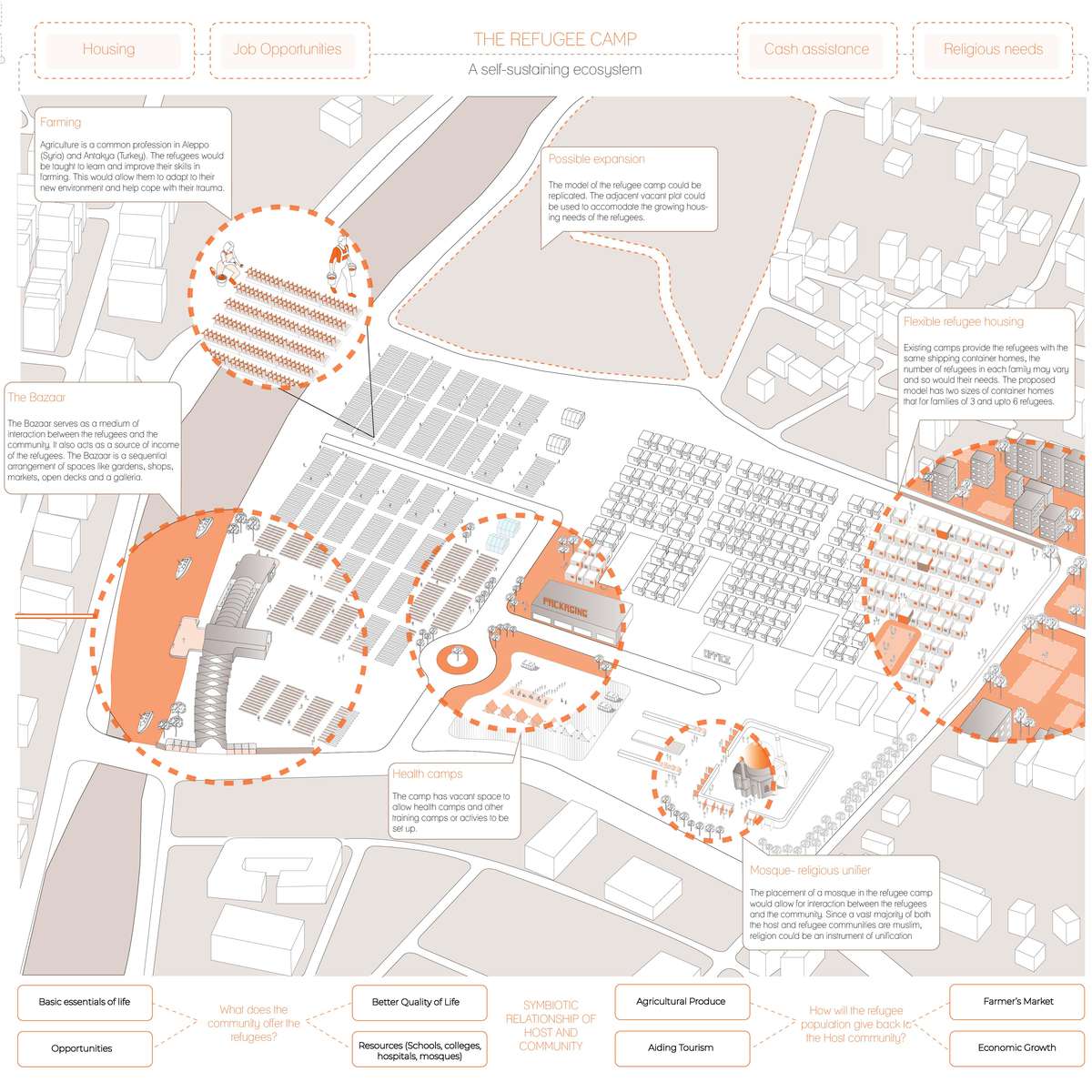
The proposed refugee camp (Design intervention)

Images of the Bazaar
Limbo to Liberation
Limbo to Liberation

- Site-specific cases
LIMBO TO LIBERATION
The ongoing war in Syria has continually caused havoc in the lives of Syrians; over the past decade, thousands of Syrians have lost their lives, families, homes and any hope for a better future. Due to the large number of Syrians seeking refuge, they are not immediately welcomed into the neighboring countries. Instead they are taken to refugee camps where they would have to wait for authorization of their refugee status. Escaping a war struck country is a traumatic experience in itself but the deteriorating conditions of the existing refugee camps cause more harm than benefit to the refugees. The refugees remain in this state of “limbo” for prolonged periods of time, they are rescued from one rescued from one hostile environment and put into another. The design intervention proposes a system for the uneducated or unskilled population, that would through the refugee camp promote growth and stability of the refugees
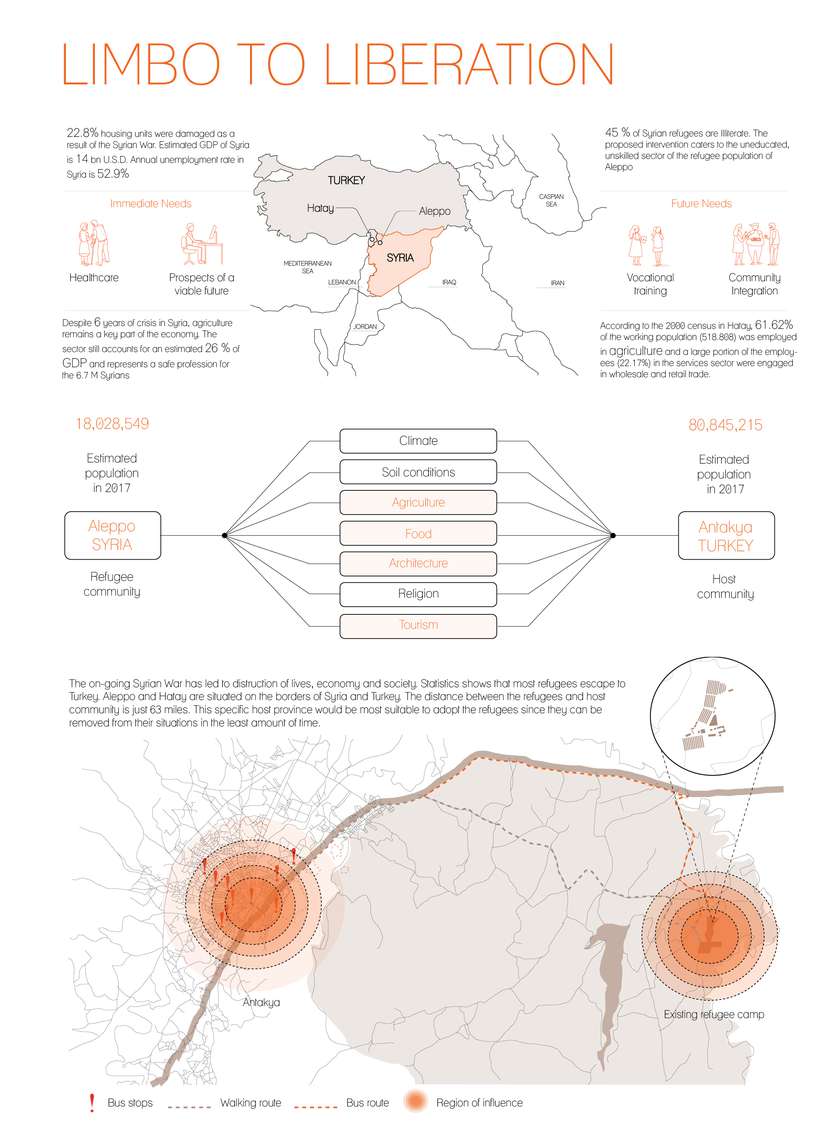
Current scenario of refugees in Syria, analysis of the refugee (Aleppo, Syria) and host community (Antakya, Turkey) and the conditions of refugee camps in Turkey.
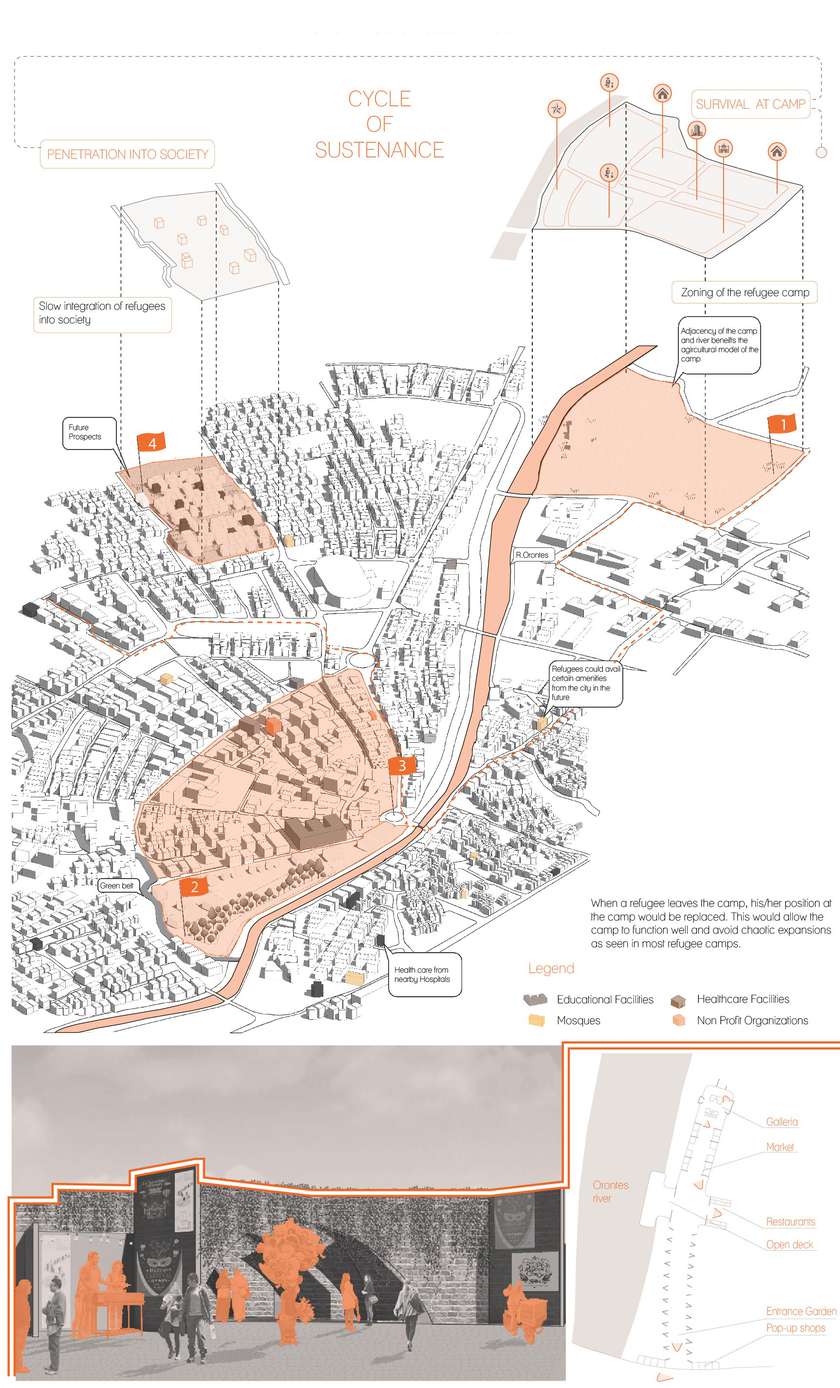
A macro level understanding of the city of Antakya.

The proposed refugee camp (Design intervention)

Images of the Bazaar